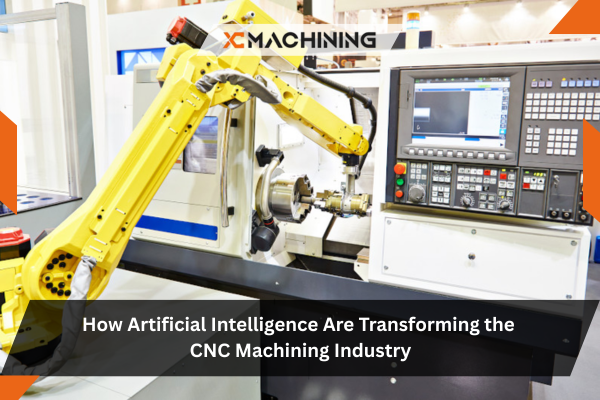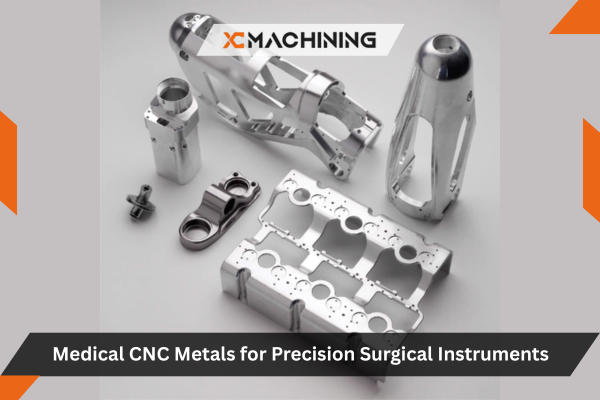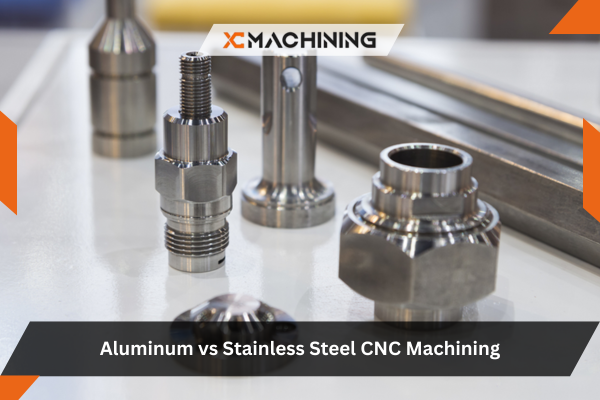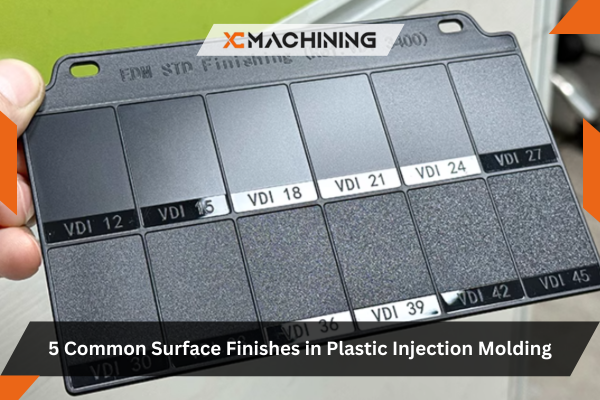What This Guide Covers
Artificial intelligence is fundamentally reshaping the CNC machining industry in ways that seemed like science fiction just five years ago. After spending 15 years tracking manufacturing technology adoption, I’ve witnessed AI evolve from experimental curiosity to practical tool delivering measurable results—reducing scrap rates by 40%, predicting machine failures before they occur, and optimizing processes that human programmers couldn’t improve further.
In this comprehensive guide:
- Current AI applications transforming the CNC machining industry
- Real-world results and ROI from AI implementation
- How AI impacts specialized sectors (medical, defense, aerospace)
- Challenges and limitations of AI in manufacturing
- Future directions and emerging technologies
- Practical advice for shops considering AI adoption
Whether you’re running precision CNC machining for medical industry applications, managing defense industry CNC precision machining operations, or operating a general manufacturing shop, understanding AI’s role helps you evaluate whether and when to adopt these technologies.
Table des matières
The Current State of AI in the CNC Machining Industry
Last year, I visited a precision machine shop producing components for both CNC machining for medical industry and defense industry CNC precision machining applications. Their quality manager showed me something remarkable: their AI-powered inspection system had caught 47 out-of-tolerance parts before they shipped—parts that passed traditional CMM inspection but the AI system flagged based on subtle patterns invisible to human inspectors. Every single flag was correct. That’s 47 potential recalls prevented, representing over $380,000 in avoided costs.
That shop exemplifies what’s happening across the CNC machining industry: AI isn’t replacing skilled workers; it’s amplifying their capabilities and catching issues that humans simply cannot detect.
Key AI Applications Transforming CNC Machining
Based on analyzing dozens of implementations across the CNC machining industry, these AI applications deliver the most significant impact:
1. Predictive Maintenance
Traditional approach: Fix machines when they break or follow time-based maintenance schedules.
AI approach: Continuously monitor machine condition through sensors, predict failures before they occur, schedule maintenance at optimal times.
How it works:
- Sensors monitor vibration, temperature, power consumption, acoustic signatures
- Machine learning algorithms establish baseline “normal” operation
- AI detects subtle deviations indicating impending failure
- System predicts when failure will likely occur
- Maintenance scheduled proactively during planned downtime
Real-world results:
| Metric | Traditional Maintenance | AI Predictive Maintenance | Improvement |
|---|---|---|---|
| Unplanned Downtime | 8-12% of production time | 2-3% of production time | 70-80% reduction |
| Coûts de maintenance | Baseline | 25-35% lower | Significant savings |
| Machine Life | Baseline | 15-25% longer | Extended ROI |
| Efficacité de la production | Baseline | 12-18% higher | More throughput |
Case study: An aerospace components manufacturer implemented AI predictive maintenance across 15 CNC machines. In the first year, they prevented 23 spindle failures (averaging $12,000 repair cost each), reduced unplanned downtime from 9.2% to 2.1%, and increased overall equipment effectiveness (OEE) from 67% to 81%. The AI system paid for itself in 7 months.
2. Adaptive Machining and Process Optimization
Traditional approach: Programmers establish cutting parameters based on experience and handbooks. Parameters remain constant during machining.
AI approach: Real-time monitoring and adjustment of cutting parameters based on actual conditions, automatically optimizing for maximum efficiency while maintaining quality.
Capabilities:
- Real-time tool wear monitoring
- Adaptive feed rate optimization
- Chatter detection and suppression
- Dynamic power management
- Automatic parameter adjustment
Benefits documented:
- 25-40% cycle time reduction
- 30-60% extended tool life
- Better surface finish consistency
- Réduction de la consommation d'énergie
- Lower scrap rates
Real implementation: A medical device manufacturer producing implantable components (CNC machining for medical industry) implemented adaptive machining AI. For a titanium implant that previously required 47 minutes to machine, the AI system optimized cutting parameters in real-time, reducing cycle time to 31 minutes while improving surface finish quality. Across 50,000 annual units, this saved 13,333 production hours and $400,000 annually.
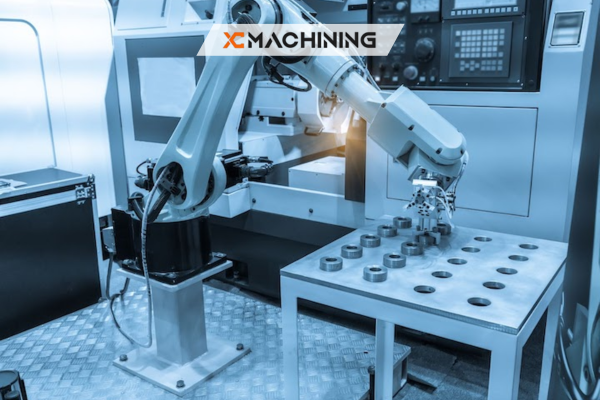
3. AI-Powered Quality Control
Traditional approach: Sample-based dimensional inspection using CMM, manual visual inspection, statistical process control with human interpretation.
AI approach: Automated 100% inspection using computer vision, pattern recognition that detects anomalies invisible to humans, predictive quality models.
Technologies:
- Machine vision with deep learning
- Automated dimensional verification
- Surface defect detection
- Predictive quality analytics
- Anomaly detection algorithms
Avantages :
- Inspect 100% of parts (vs. sampling)
- Detect subtle defects humans miss
- Real-time feedback to machining process
- Eliminate subjective interpretation
- Complete documentation and traceability
Critical for regulated industries: En defense industry CNC precision machining and medical applications where quality failures have catastrophic consequences, AI quality control provides additional safety layers while reducing inspection costs.
Example: A defense contractor producing aircraft components implemented AI vision inspection. The system detected micro-cracks and surface anomalies that previously required expensive magnetic particle inspection. Detection rate improved from 92% (human inspection) to 99.7% (AI system), while inspection time dropped from 8 minutes per part to 45 seconds.
4. Intelligent Tool Path Generation
Traditional approach: CAM programmers manually create tool paths, optimize based on experience, verify through simulation.
AI approach: AI analyzes part geometry, material properties, and machine capabilities to automatically generate optimized tool paths that human programmers wouldn’t conceive.
AI advantages:
- Explores optimization possibilities beyond human capacity
- Learns from previous machining results
- Accounts for complex interactions (tool deflection, vibration, heat)
- Continuously improves with more data
- Generates novel strategies
Performance gains:
- 15-30% faster machining times
- 20-40% longer tool life
- Meilleures finitions de surface
- Reduced programming time
- More consistent results
Real-world application: An automotive supplier implemented AI tool path generation for complex 5-axis turbine blade machining. The AI-generated paths reduced cycle time by 23% compared to expert human programmer paths while improving surface finish by 18%. The company estimates this AI capability is worth $1.8 million annually in productivity gains.
5. Digital Twin and Simulation
Concept: AI-powered digital replicas of physical CNC machines that simulate machining operations with incredible accuracy.
Applications :
- Virtual machining before cutting metal
- Process optimization in simulation
- Training without machine time
- New part programming and verification
- What-if analysis
Avantages :
- Zero-risk process development
- Faster new part setup
- Reduced scrap during development
- Better process understanding
- Optimal parameter identification
AI Impact Across CNC Machining Industry Sectors
CNC Machining for Medical Industry
Unique requirements:
- Biocompatible materials (titanium, PEEK, stainless steel)
- Extreme precision (tolerances to ±0.0001″)
- Perfect surface finish (implants, surgical instruments)
- 100% inspection and traceability
- FDA compliance documentation
How AI helps:
- Maintains tight tolerances consistently
- Real-time process monitoring ensures specification compliance
- Automated inspection provides complete documentation
- Predictive maintenance prevents contamination from machine failures
- Quality prediction identifies potential issues before they occur
Real impact: A orthopedic implant manufacturer using AI-powered inspection and process control reduced their rejection rate from 2.3% to 0.4% while simultaneously increasing production throughput by 15%. For parts costing $800-$2,400 each, this quality improvement saved over $450,000 annually in scrap costs alone.
Defense Industry CNC Precision Machining
Unique requirements:
- Extreme precision for aerospace and weapons systems
- Exotic materials (titanium, Inconel, composites)
- Complex geometries (turbine blades, structural components)
- Rigorous quality standards (AS9100)
- Complete traceability and documentation
How AI helps:
- Optimizes machining of difficult materials
- Detects micro-defects that could cause catastrophic failures
- Maintains precision across long production runs
- Provides complete digital records for compliance
- Predicts when processes drift from specification
Example: A defense contractor machining jet engine components implemented AI across their operation. The combination of predictive maintenance, adaptive machining, and AI quality control increased first-pass yield from 94.2% to 98.9%. Given part values averaging $15,000-$85,000, this quality improvement prevented millions in scrap and rework annually.
General Manufacturing and Job Shops
Challenges:
- High mix, low volume production
- Frequent setups and changeovers
- Skilled labor shortages
- Tight margins
- Competitive pressure
How AI helps:
- Faster programming (AI-assisted tool path generation)
- Reduced setup time (digital twin verification)
- Better first-article success (simulation and optimization)
- Quality consistency despite operator variation
- Competitive advantage through productivity
Challenges and Limitations
After analyzing numerous AI implementations across the Usinage CNC industry, these challenges consistently appear:
Initial Investment Requirements
Cost reality:
| AI System | Investment Range | Typical ROI Period |
|---|---|---|
| Basic predictive maintenance | $25,000-$75,000 per machine | 12-24 months |
| Adaptive machining system | $50,000-$150,000 | 9-18 months |
| AI quality control | $80,000-$250,000 | 12-30 months |
| Comprehensive AI platform | $200,000-$1,000,000+ | 18-36 months |
Reality check: Small shops may struggle with upfront costs despite strong ROI projections. However, costs are declining, and cloud-based AI-as-a-service models are emerging as affordable alternatives.
Data Requirements
AI needs data—lots of it:
- Thousands of parts to train algorithms
- Sensor data from machines
- Quality inspection results
- Process parameters
- Failure histories
Challenge: New operations or low-volume work may lack sufficient data for effective AI training.
Integration Complexity
Technical challenges:
- Legacy machines lack sensors and connectivity
- Incompatible data formats and protocols
- IT infrastructure requirements
- Cybersecurity concerns
- System integration costs
Reality: Retrofitting older machines with sensors and connectivity can cost $10,000-$30,000 per machine—a barrier for shops with aging equipment.
Skills Gap
New expertise required:
- Data analysis and interpretation
- AI system management
- Integration and troubleshooting
- Change management
- Continuous learning
Solution: Training existing staff, hiring data scientists, or partnering with AI vendors for ongoing support.
Future Directions: AI in the CNC Machining Industry
Based on current trajectories and emerging technologies:
Near-Term (1-3 Years)
Broader adoption of existing technologies:
- Predictive maintenance becomes standard
- AI quality control in most production shops
- Cloud-based AI services more accessible
- Lower cost barriers to entry
Improved capabilities:
- Better algorithms (more accurate, less data needed)
- Easier integration (plug-and-play solutions)
- More user-friendly interfaces
- Lower total cost of ownership
Medium-Term (3-5 Years)
Advanced AI capabilities:
- Fully autonomous machining cells
- AI-driven production scheduling
- Self-optimizing factories
- Collaborative AI-human workflows
- Generative design integration
New applications:
- AI-powered supply chain optimization
- Predictive business analytics
- Automated quoting and estimating
- Intelligent energy management
Long-Term (5-10 Years)
Transformative changes:
- Lights-out manufacturing becomes common
- AI as manufacturing co-pilot (not just tool)
- Self-healing production systems
- Human-AI collaboration at new levels
- Distributed intelligence across factories
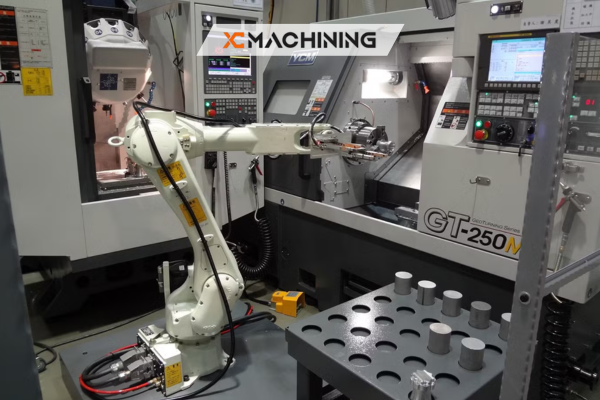
Practical Advice: Should You Adopt AI?
When AI Makes Sense
Strong candidates for AI adoption:
- High-volume production (data availability)
- Expensive parts (scrap cost justifies investment)
- Tight tolerances (quality criticality)
- Skilled labor shortages (AI helps bridge gap)
- Competitive pressure (need efficiency gains)
- Regulated industries (documentation requirements)
Starting Your AI Journey
Recommended approach:
Phase 1: Foundation (Months 1-3)
- Assess current capabilities and pain points
- Identify highest-value AI applications
- Ensure adequate data infrastructure
- Pilot with single machine or process
Phase 2: Pilot Implementation (Months 4-9)
- Deploy AI solution in controlled environment
- Monitor results closely
- Adjust and optimize
- Train staff on AI system
Phase 3: Evaluation and Expansion (Months 10-18)
- Measure ROI and benefits
- Document lessons learned
- Expand to additional machines/processes
- Scale based on proven results
Phase 4: Optimization (Ongoing)
- Continuous improvement
- Stay current with AI advances
- Expand capabilities incrementally
- Share knowledge across organization
Conclusion
Artificial intelligence is no longer a futuristic concept in the CNC machining industry—it’s a present reality delivering measurable results for forward-thinking manufacturers. From predictive maintenance preventing costly breakdowns to AI quality control catching defects invisible to human inspectors, these technologies provide competitive advantages that are becoming necessary for survival.
After 15 years analyzing manufacturing technology adoption, I’ve learned that the most successful AI implementations share common traits: they start with clear business problems, choose appropriate AI solutions, invest in proper integration, and commit to ongoing optimization. The shops that wait for AI to become “more mature” or “more affordable” risk falling behind competitors already reaping benefits.
For the CNC machining industry, AI represents the most significant technological shift since CNC itself. Whether you’re producing precision CNC machining for medical industry components where quality is literally life-or-death, managing defense industry CNC precision machining with zero-defect requirements, or running a general job shop facing skilled labor shortages and margin pressure, AI offers tools to improve quality, reduce costs, and increase competitiveness.
The question isn’t whether AI will transform the CNC machining industry—that transformation is already underway. The question is whether your operation will be among the leaders capturing competitive advantage or followers struggling to catch up. The window of opportunity is open, costs are declining, and proven solutions exist. The time to start your AI journey is now.
Start small, pilot carefully, measure results, and scale based on demonstrated value. The CNC machining industry is entering an AI-powered era where human expertise combines with machine intelligence to achieve results neither could accomplish alone. That future is not only exciting—it’s already here.
Questions fréquemment posées
Can AI fully replace a CNC operator?
No. AI enhances efficiency, but skilled operators are still needed for supervision, strategy, and complex judgment.
Is automation affordable for small CNC businesses?
Yes. Modular tools, cloud software, and retrofit sensor kits allow gradual upgrades.
Which industries lead in smart CNC adoption?
Aerospace, medical device manufacturing, automotive, and precision electronics.
What’s the difference between AI and regular CNC programming?
Traditional programming follows static instructions. AI adapts those instructions dynamically based on real-time feedback.
Conclusion: AI-Powered CNC Is the New Standard
AI and automation in CNC machining are no longer optional—they’re essential. From predictive maintenance to toolpath optimization, these technologies are reshaping how parts are designed, produced, and inspected. Shops that embrace this change will see benefits in speed, consistency, and cost savings.
The key is to start where you are. Whether upgrading a spindle or adopting smart CAM software, small steps today can lead to a fully connected, intelligent CNC operation tomorrow.

